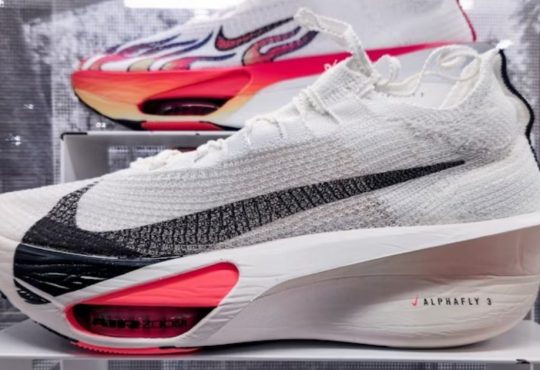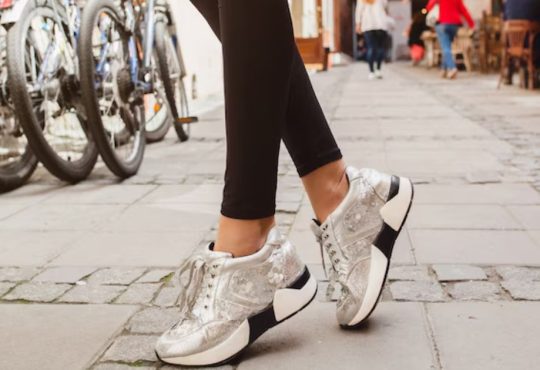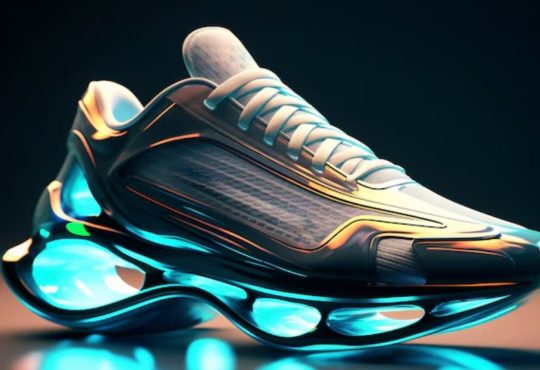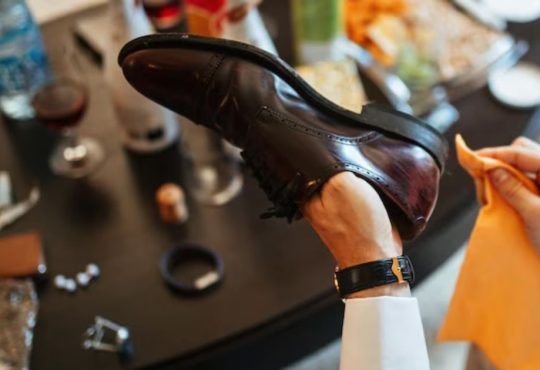Proper footwear is essential for any runner, whether a beginner or a seasoned marathoner. The right running shoes not only enhance performance but also reduce the risk of injury. While there are countless options on the market, it’s necessary to understand the critical elements that contribute to a high-performing running shoe. In this guide, we’ll break down what to look for in performance footwear, making it easier for you to select the right pair tailored to your needs.
Running shoes are much more than a simple accessory. They’re a key piece of equipment that supports your body through every stride. With the right shoes, you can achieve better results, experience fewer injuries, and enjoy more comfort during your runs. In this article, we’ll explore everything you need to know about running shoes, from foot anatomy to specific shoe types and features to look for based on your running goals.
Essential Guide to Choosing the Best Running Shoes for You
1. Understanding Your Foot Type
Before diving into the different types of running shoes, it’s crucial to understand your foot type first. Your foot structure plays a significant role in determining which shoe will provide the best fit and support. There are three basic foot types:
- Neutral Arch (Normal Arch): This is the most common type of foot. People with a neutral arch have a well-balanced foot structure that offers natural support during running. Neutral runners benefit from shoes that provide a good amount of cushioning and minimal correction.
- Flat Arch (Overpronation): Flat-footed runners tend to roll their feet inward as they run, a condition known as overpronation. This excessive inward movement can lead to stress on the knees and ankles. To compensate, runners with flat arches should look for shoes that offer extra support and stability.
- High Arch (Underpronation or Supination): Those with high arches tend to have a more rigid foot structure that doesn’t absorb shock as effectively. As a result, underpronators may need running shoes with extra cushioning to help distribute impact evenly and reduce strain on their legs.
Key Recommendation:
To determine your foot type, consider visiting a running store that offers gait analysis. By analyzing your stride, they can recommend the best shoe type to match your unique foot structure.
2. Running Shoe Types and Their Purpose
Running shoes are not one-size-fits-all. Different types of shoes are designed to meet different running needs. Here’s a breakdown of the most common running shoe categories:
- Neutral Running Shoes: These are designed for runners with neutral arches and a normal gait. These shoes offer balanced cushioning and are ideal for those who do not need extra support for overpronation or underpronation. Popular options include the Brooks Ghost and the Nike Air Zoom Pegasus.
- Stability Shoes: These shoes are built for runners with mild overpronation. Stability shoes provide moderate support to help guide the foot through a more neutral running motion. They offer a balance of cushioning and support, which makes them suitable for many runners. Examples include the Asics Gel-Kayano and the New Balance 860.
- Motion Control Shoes: If you suffer from severe overpronation, motion control shoes are designed to prevent excessive inward rolling of the foot. These shoes are more rigid and provide maximum support to maintain proper alignment throughout the running stride. Consider the Brooks Beast or the Saucony Redeemer if you need this type of shoe.
- Trail Running Shoes: Explicitly designed for off-road running, trail running shoes are equipped with rugged outsoles for added traction on uneven or slippery surfaces. These shoes also offer enhanced durability and protection from debris, making them ideal for mountain trails or muddy paths. Popular models include the Salomon Speedcross and the Hoka One One Speedgoat.
- Racing Flats and Minimalist Shoes: For competitive runners, racing flats offer a lightweight, responsive feel with minimal cushioning. These shoes are great for speed work and racing but may not provide the level of support and cushioning needed for daily training. Minimalist shoes, such as the Vibram FiveFingers, offer even less cushioning and promote a more natural running form.
Key Recommendation:
If you’re unsure which shoe type suits you best, it’s worth trying a few different models. Test out several pairs at a local store, and remember that each shoe type has distinct features that cater to specific needs.
3. Fit and Sizing
Even if you know which type of running shoe to choose, getting the right fit is just as important. An improperly fitted shoe can lead to blisters, discomfort, and even injury. Here are a few tips to ensure that your running shoes fit correctly:
- Toe Box Room: Make sure there’s about half an inch of space between your longest toe and the front of the shoe. Cramping your toes could lead to painful conditions like blisters or black toenails.
- Heel Fit: The heel should fit snugly to prevent slipping, which could cause blisters. However, it shouldn’t be so tight that it constricts the foot.
- Width: Shoes come in various widths, so be sure to find a pair that accommodates your feet’ width. Narrow or wide feet often benefit from shoes that offer more specific sizing options.
- Arch Support: Whether you have high arches, flat feet, or neutral arches, make sure the shoe provides enough support in the arch area to prevent strain and injury.
Key Recommendation:
When trying on running shoes, bring the socks you typically wear for running. Aim to try shoes on at the end of the day when your feet are slightly swollen for a more accurate fit.
4. Cushioning and Support
Cushioning is another critical feature to consider when shopping for running shoes. The right level of cushioning can greatly affect your comfort and performance, especially during long runs. However, too much cushioning can lead to a loss of stability, while too little can cause discomfort and fatigue.
- Soft Cushioning: For runners looking for comfort, soft cushioning options like EVA (Ethylene Vinyl Acetate) or memory foam can provide a plush feel. These types of shoes are great for long-distance runners or those who are prone to joint pain.
- Responsive Cushioning: Runners looking for a more responsive feel should consider shoes with reactive cushioning, such as Adidas Boost or Nike React technology. These materials provide a balance of softness and bounce, offering both comfort and energy return during runs.
- Firm Cushioning: If you’re a runner who prefers more ground contact, firmer cushioning is the way to go. These shoes provide less bounce but offer superior stability and control. They are ideal for runners who need extra support and those who run on firm surfaces like tracks or roads.
Key Recommendation:
For those with specific injury concerns (e.g., knee pain, plantar fasciitis), it’s essential to try out different cushioning options to see which one provides the best relief. Consulting with a podiatrist or physical therapist can help you identify the most supportive shoe for your needs.
5. Materials and Durability
Running shoes are subjected to a lot of wear and tear, so durability is a key consideration. The materials used in the construction of the shoe play a significant role in its longevity.
- Outsole: Rubber is a common material used in outsoles due to its durability and traction. Some boots may feature carbon rubber in high-wear areas for added durability.
- Upper: The upper part of the shoe is made from mesh or synthetic fabrics, which offer breathability and flexibility. For added durability, some boots have overlays or reinforcements in key areas to prevent wear and tear.
- Midsole: Cushioning technologies are often found in the midsole. Materials like EVA, polyurethane, and gels provide cushioning and comfort. The midsole also contributes to the shoe’s overall weight.
Key Recommendation:
If you log a lot of miles or run on harsh surfaces, it’s worth investing in shoes with a durable outsole and high-quality materials to extend the life of the shoe.
6. Running Style and Terrain
Your running style and the terrain you run on will directly affect the type of shoe you need. Here are a few considerations:
- Running Style: Whether you’re a forefoot, midfoot, or heel striker, your foot’s landing pattern affects the wear on your shoes. Forefoot and midfoot strikers tend to need shoes with more responsive cushioning, while heel strikers may benefit from extra shock absorption.
- Terrain: If you’re running on trails, you’ll need shoes with more aggressive tread patterns and additional stability. Road running shoes offer a smoother ride but lack the required grip for uneven surfaces.
Key Recommendation:
Trail runners should opt for shoes with thicker soles, better traction, and waterproofing to handle mud and rough terrain. Road runners can choose shoes with smooth, lighter soles that provide a more responsive and faster feel.
7. Choosing the Right Shoe for Your Running Goals
Your goals as a runner will heavily influence the shoes you need. Whether you’re training for a marathon or aiming to improve your sprinting times, the type of shoe you choose should complement your specific goals.
- Long-distance Runners: If you plan on running long distances, focus on cushioning and support. Shoes with soft, responsive cushioning will help protect your feet over long miles.
- Speed Training or Racing: For speed, look for lightweight racing flats or shoes with minimal cushioning to encourage quick foot turnover. These shoes should feel fast and responsive, but they’re not ideal for everyday training.
Key Recommendation:
Consider rotating between different types of shoes depending on your training routine. For example, you can wear cushioning shoes for your long runs and lightweight shoes for your speed workouts.
9. When to Replace Your Running Shoes
Running shoes don’t last forever. Over time, their cushioning and support will break down, and the outsole will wear out. As a general rule, replace running shoes every 300-500 miles. However, factors like your weight, running style, and the terrain you run on can all affect shoe longevity.
Key Recommendation:
Keep track of your mileage with a running app or journal. Once you hit the 300-mile mark, start evaluating your shoes for signs of wear, such as flattened cushioning or worn-out outsoles.
Finding the Perfect Running Shoe for Your Needs
Choosing the right running shoe is about understanding your foot type, fit, and running goals. Whether you’re running on roads or trails, for speed or distance, the proper footwear can make a significant difference in your performance and injury prevention. By considering cushioning, support, durability, and materials, you can find a shoe that fits your needs perfectly.
Take the time to try different shoes, assess your running form, and consult experts when necessary. With the right pair of running shoes, you’ll be ready to hit the pavement and achieve your personal best.





